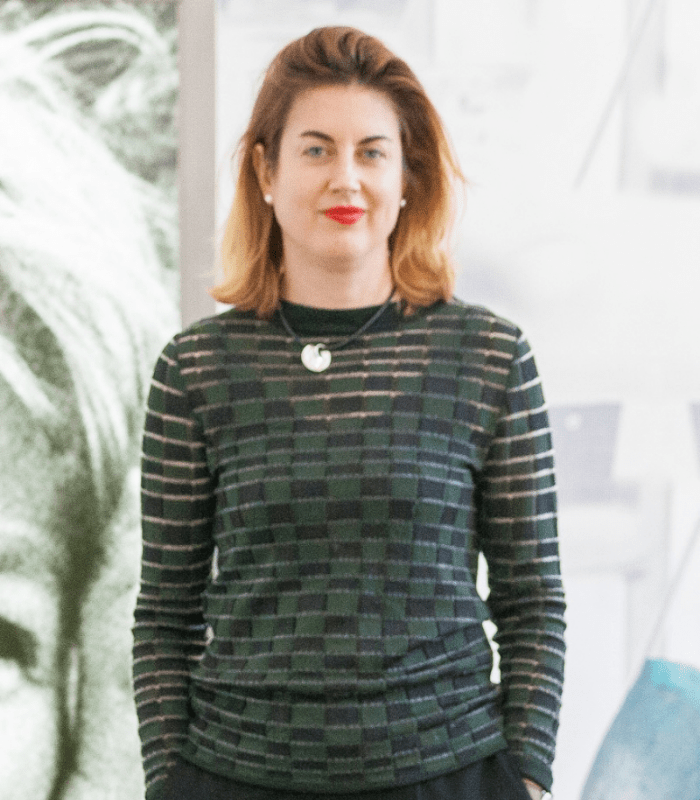We want you to get to know our Champions better and so we sat down for a series of fascinating conversations to allow them to give us an insight into their role and involvement in Creative Estuary, what their aspirations are for the project and their love for our stunning estuary.
Katharine Stout is the Director of Focal Point Gallery in Southend, and Associate Director of The Drawing Room, London and we are honoured that she has agreed to support the project.
Tell us about your current role:
I’m the Director of Focal Point Gallery, South Essex’s only dedicated contemporary art venue. We regularly host and commission artists to produce new works for exhibitions and projects that make us think differently about our locality, our sense of self and the importance of communities.
What is your involvement in Creative Estuary?
I’m involved with Creative Estuary in different ways. In addition to my role at the Focal Point Gallery, which is a part of Southend Borough Council, I am contributing to the thinking around the opportunities for cultural regeneration, and so helping shape the wider strategic vision for the area.
I am also co-chair of the South Essex Creative Economies Network which goes across Kent, East Sussex and Essex and is a working group of the South East Local Enterprise Partnership.
Why did you say “yes” to becoming one of our champions?
Creative Estuary is extremely exciting! It will be instrumental in promoting the strengths of the creative industries and supporting them to help this region reach its full potential. It’s not just businesses and creative practitioners who will benefit from the project, but also the residents of the region – the people who live and work in this vibrant and unique area.
Being new to the area, I have been struck by how the estuary is not what people expect it to be. It has its own complex history of being under-recognised despite being one of the most important historic locations of the UK. It may sound grandiose, but if you think of the River Thames and the instrumental role it has played in the shaping of England and the UK – in ways good and bad – it can be quite an overlooked place. It is really important to champion what’s great about the estuary and its future potential.
To you, what is the biggest draw of the Estuary for creatives?
For me the biggest draw is the space – not just in a bricks and mortar point of view, I also mean space to breathe; to be able to find independence. It’s a place to shape and to create your own practice and way of being, in an independent way, while been linked to the rest of the world.
For example, a few people I know from Southend used to commute to London and would stay there after work to experience the culture, but because of lockdown have rediscovered their local area and are now enjoying the arts and culture here instead. They have seen that the area has a lot to give in terms of being able to live, work and play. As things start to settle into a new normal, they want to be able to make the best of their talent and give back to the area – a coming together of wanting to be where they reside and really engage with the rich cultural scene – and we can give them the infrastructure to do that.
As a result of the pandemic, the concept of “place” has changed. How are the creative industries adapting and/or how can the Creative Estuary help?
It’s two-fold. What has been so difficult for the creative sector has been the withdrawal of place. A place to perform, a place to present, a place to work, and that real life moment to experience the arts in situ. That has been taken away and we’ve all been missing it. However, the way people have brought the arts into their own homes via streaming etc, has demonstrated the importance that creative activities, arts and culture play in our sense of wellbeing.
As we continue to recover from the devastation of the pandemic, we must be careful not just to return to how things were before. Against all the hardship and suffering, the greater use of digital, the finding of innovative ways to collaborate and communicate, has given some new opportunities that I hope we don’t lose. We can rethink local – it can be open, expansive, connected and make the best of the immediate surroundings and communities.
One of our aims is for the Creative Estuary to be a place to inspire (investment, enterprise and productivity). What inspires you about Creative Estuary?
What’s exciting about Creative Estuary is its potential. The potential of what is already here – the rich cultural heritage and the vibrant breadth of talent across the disciplines. And this is currently undervalued and underserved, so it is timely to have culture lead recovery.
Our champions are drawn from across creative, education, development and finance industries. They reflect the inclusivity we want grow with the development. What are your views of D&I in the creative industries and therefore the CE project?
For me it is simple; we need to be reflective of the society we live in otherwise we’re not relevant. And to be successful we need to be relevant. Inclusivity is imperative in achieving this.
What is your favourite place on the Thames Estuary?
That’s a tough one! It is the view looking out from Southend, where the estuary becomes the sea and you see that expanse of water and sky. The excitement as the estuary opens out to the world and the potential this brings with it.
